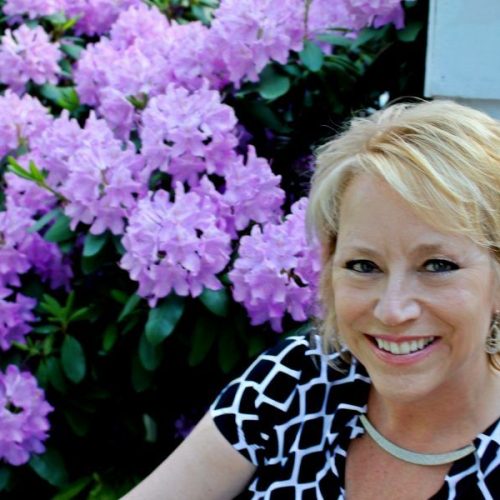Gratitude Therapy – Finding Happiness in Recovery/Life

What’s happier than a field of sunflowers?
I keep a file, with a pink and orange leaf motif, labeled “HAPPINESS”. The file contains articles, post-it notes, clippings, and odds and ends on positive psychology. I am fascinated by the concept of gratitude as a therapeutic intervention (in these times it seems even more germane). And how gratitude groups in the treatment of substance use disorders (SUD) can impact how our clients find contentment in recovery and happiness in life.
The Ancient Greeks defined pleasure [happiness] as the absence of mental and physical pain. And there is so much loss, negativity and pain within the disease of addiction. But happiness is not simply the absence of pain. It must come from the belief that you are deserving of a happy life. For those in recovery, the challenges to reversing a negative mindset are a stronghold. Gratitude groups train the brain to experience life positively.
Gratitude Therapy – Gratitude Groups
One of the most perplexing of life’s unanswerable questions is, “What is happiness?” That we all strive for happiness without knowing what happiness is, creates what is perhaps our greatest dilemma. What do we want? What brings us joy? How do we find contentment in a world so full of pain?
And for someone recovering from an SUD, the questions are even more primal. How do I start over? Will I ever be happy again? What will I do to replace my ubiquitous substance of choice? The fact is, developing positivity, awareness of attitude and, yes, happiness is a learned skill that takes planning, practice and effort. The goal of a gratitude group is to shift focus from the losses experienced in the disease of addiction to acceptance. And to embrace the challenge of deserving and finding happiness – however our clients define it!
The benefits of gratitude groups …
A number of experimental trials have examined the benefits of gratitude. Dr. Robert Emmons, a leading scientific expert on gratitude, carried out a 10-week study with 3 different groups. One was the “gratitude condition group” who wrote down things they were grateful for. The “hassles condition group” wrote down daily stressors. And the “control group” wrote down events without a positive or negative spin.
The conclusion was that those in the gratitude group felt 25% happier, were more optimistic about the future, and even exercised more each week than those in the hassles or control groups.
Positive psychology, the scientific study of strengths that enable individuals and communities to thrive, suggests we look first to the things we are grateful for. Because positive thinking is a learned behavior. One of the exercises we use in gratitude groups is a worksheet called “Joys/Loss of Joy”. On it, our clients list ten pleasures they have in their lives, e.g. health, yoga, love of children. We ask them to think about these pleasures daily. And we ask them to fully experience the sadness and the consequences if they began to use again …
Happiness and well-being assist in the maintenance of sobriety just as sobriety assists in the maintenance of happiness.
Dr. Daniel H. Angres

Happiness in recovery – what works in Gratitude Therapy?
- Take control, set goals, know what makes you happy
- Identify your strengths
- We are happiest when we live without regret – take responsibility and let it go
- Develop an inventory of positivity – a habit of gratitude
- Take care of yourself
- Forgive yourself
- Stay in the moment with mindfulness
- Try a little tenderness/kindness
- Celebrate the ordinary times
- Make true connections
- Create a “love list” – people you love and have loved you
- Establish a “safe zone” where you do not have to think
- Explore your spirituality
- Reach beyond your daily reality and daydream
- Laugh
- Do the next right thing
- Go with the flow
- SMILE
.
Journaling
Journaling is an effective tool for building cognitive pathways that advance positivity. When you write your positive thoughts and experiences down in a journal, it focuses attention on developing grateful thinking, and eliminating negative thoughts. It can be as simple as writing down five things that make you feel grateful each week. Or you can count your blessings daily.
Another gratitude exercise is to write down 3 to 5 things you liked today. Explain what happened, why, what you did right, and why you did it. Then, write one thing down that you didn’t like today. Ask yourself, how could this be a blessing in disguise? And find 2 or 3 things you learned from the experience.

A few prompts for gratitude journaling I like:
- Make a list of 30 things that make you smile
- Name a compassionate way you’ve supported a friend and then write down how you can do the same for yourself
- Make a list of everything you’d like to say “yes” to
- Who is your favorite person in the world and why?
- What would the perfect day look like for you?
Gratitude unlocks the fullness of life. It turns what we have into enough, and more… turns denial into acceptance, chaos into order, confusion to clarity… a meal into a feast, a house into a home, a stranger into a friend. Gratitude makes sense of our past, brings peace for today and creates vision for tomorrow.
Melody Beady Codependent No More
Gratitude Therapy – Why I Keep that “Happiness” File …
There is a reason I keep that cheerful file filled with odds and ends on gratitude, happiness and positivity. I refer to it often, and in these uncertain times, knowing what makes me happy, and helping others find happiness, seems like important work to me.
We get caught up in life and forget sometimes how good we have it. Just pause, think about it, and you will discover there are an infinite number of things to be grateful for. Become a student of the interests you love and tap into the joy you deserve.



